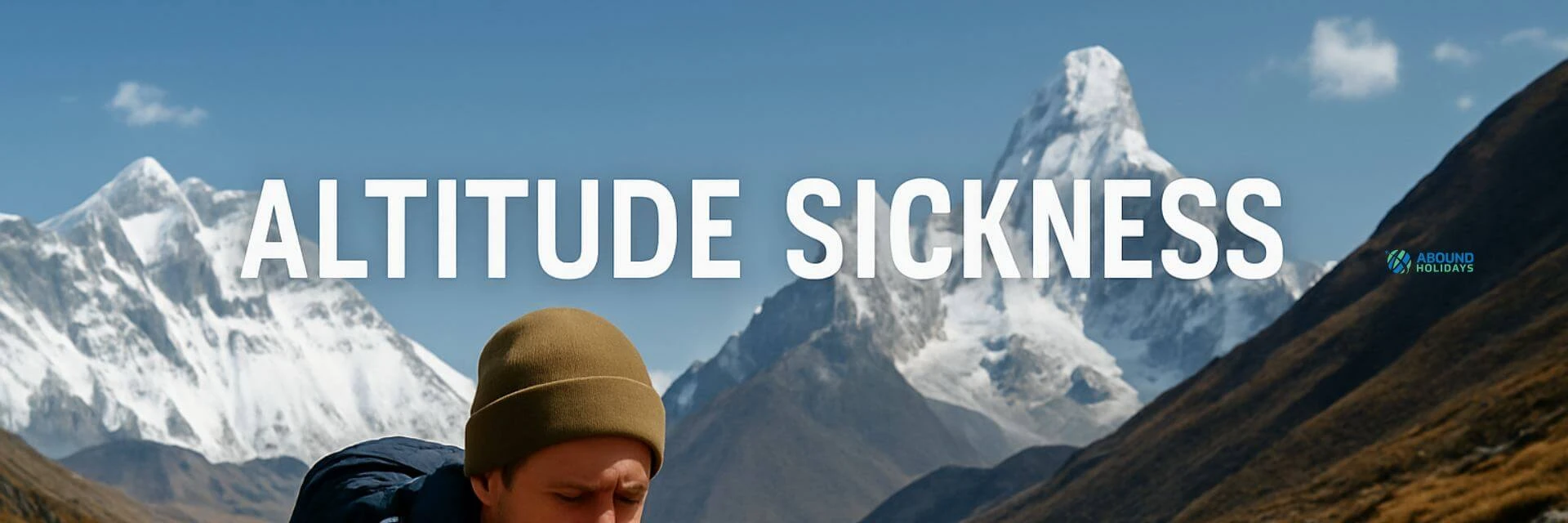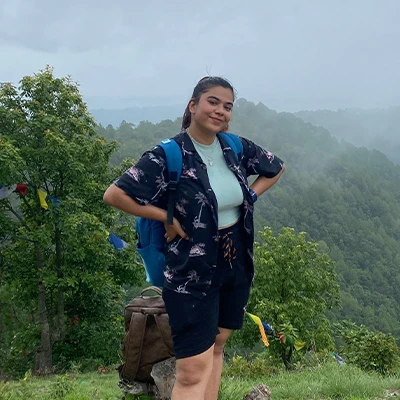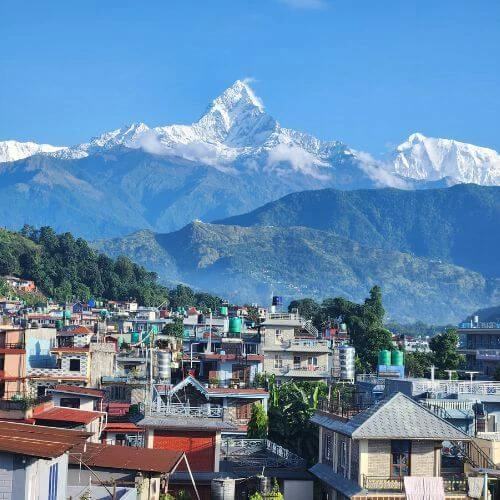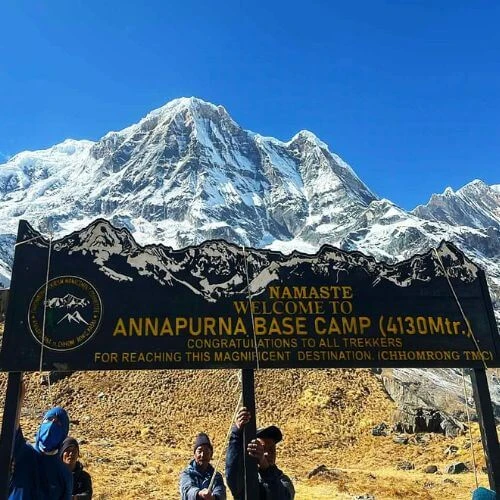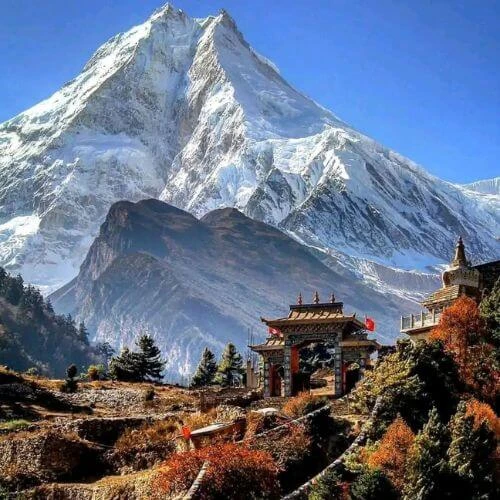Altitude sickness, also called acute mountain sickness (AMS). It happens when your body struggles to adjust to lower oxygen levels at high elevations. In this blog, you will learn about things you need to know before heading to high elevations. That is, what altitude sickness is, why it happens, what signs to look out for, how to prevent it, and what to do if symptoms appear. No matter if you are setting out to conquer the Himalayas, summit Kilimanjaro, or explore any mountain range where the air gets thin and the oxygen level drops. We are here to help you navigate the challenges and keep your adventure safe and unforgettable.
At Abound Holidays, we believe that every trek should be safe and well-informed. We have guided countless trekkers through the Himalayas. We use smart acclimatization plans, careful pacing, and real-time health checks along the way. When you travel with us, you're not just booking a trip; you’re gaining expert support, local insights, and a team that genuinely cares about your well-being at every step of the trail.
What is Altitude Sickness?
Altitude sickness (also known as Acute Mountain Sickness or AMS). It happens when your body does not get enough oxygen at higher elevations. The higher you climb, the thinner the air becomes. It makes it harder for your body to adjust especially if you ascend too quickly.
What Are the Types of Altitude Sickness?
When your body does not get enough oxygen at high elevation. It starts reacting in different ways. The three main types are: Acute Mountain Sickness (AMS), High-Altitude Pulmonary Edema (HAPE), and High-Altitude Cerebral Edema. Each is more serious than the last.
The details of three types of Altitude Sickness are:
1. Acute Mountain Sickness (AMS) – The Mild but Warning Stage
Acute Mountain Sickness (AMS) is the most common and mildest form. Most people who go above 2,500 meters (about 8,200 feet) too quickly will feel some symptoms of AMS. It’s your body’s way of saying, “Slow down, I need time to adjust.”
AMS usually kicks in within 6 to 12 hours after reaching a high elevation. It feels a bit like a hangover or flu, and while it's not life-threatening on its own, it’s a clear warning that you should rest, hydrate, and stop climbing higher until you feel better.
What to do:
You should take a rest for a day or two. You must drink plenty of water, avoid alcohol, and don’t ascend further. If the symptoms improve, you can usually continue your trek. But if they get worse, it’s important to descend.
2. High-Altitude Pulmonary Edema (HAPE) – When It Affects Your Lungs
HAPE is a more serious and dangerous form of altitude sickness. It happens when fluid starts building up in the lungs, making it difficult to breathe—even when you’re resting. It can happen without any signs of AMS and can develop quickly.
HAPE is a medical emergency and can be fatal if ignored. It typically occurs at elevations above 2,500–3,000 meters, especially if you ascend too quickly without allowing your lungs to adjust to the lower oxygen levels.
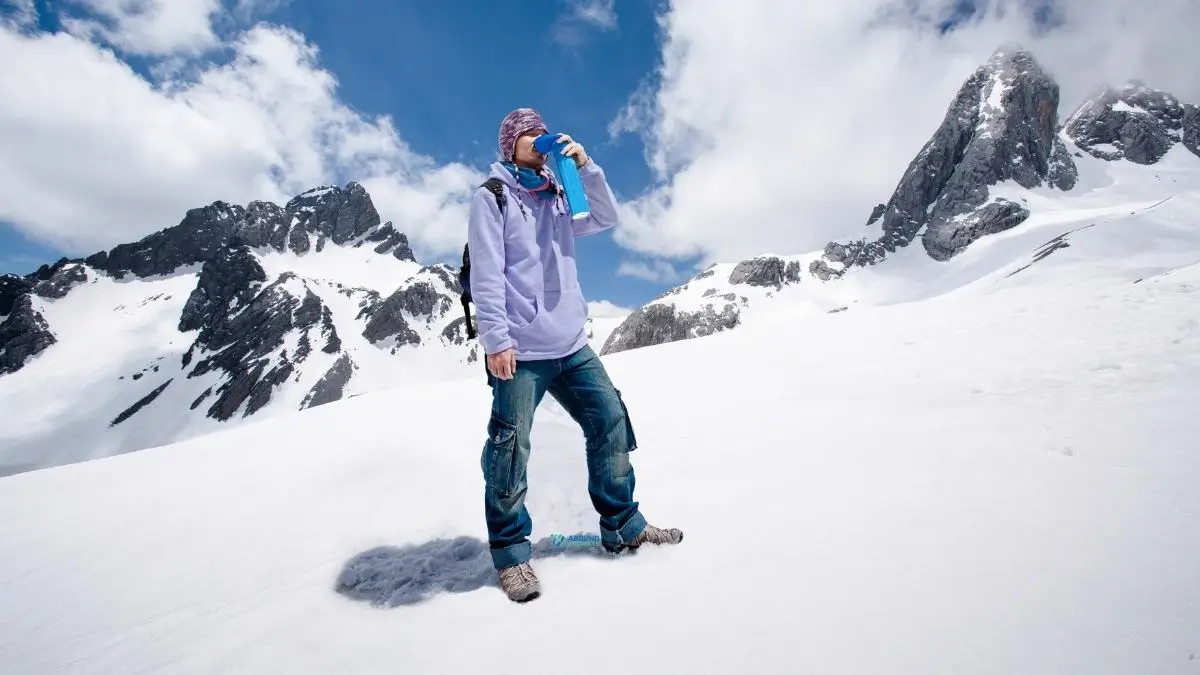
What to do:
Descend immediately to a lower elevation, even if it’s nighttime. Provide oxygen if available and seek emergency help. Do not attempt to continue trekking.
3. High-Altitude Cerebral Edema (HACE) – When It Reaches the Brain
Altitude sickness takes the form of HACE, which is the more dangerous and life-threatening type. It occurs when there is excessive liquid within the brain that makes it swell. This creates confusion, improper coordination, and coma in case it is not treated at once.
HACE is rare but deadly and often develops as a progression of untreated AMS. It can happen fast, sometimes overnight, and should never be taken lightly.
What to do:
Descend immediately. Give oxygen if available and use medications like Dexamethasone (only under medical guidance). Evacuation is often required.
What Are the Causes of Altitude Sickness?
Altitude sickness is caused by low oxygen levels at higher altitudes. When you go up too fast, your body doesn’t get time to adjust to the drop in oxygen. Even experienced trekkers can get sick if they skip proper acclimatization. That’s why at Abound Holidays, we always build extra rest days and altitude-friendly pacing into every trekking itinerary, your health is our priority.
Some of the things that may cause Altitude Sickness:
- Rapid ascent (no rest days or slow pacing)
- Lack of water consumption
- Sleeping too high, too soon
- Overexerting yourself
- Consumption of alcohol or smoking during the trek
Symptoms of Altitude Sickness
Early detection of altitude sickness will ensure that you do not get into a serious situation. What you need to watch out is:
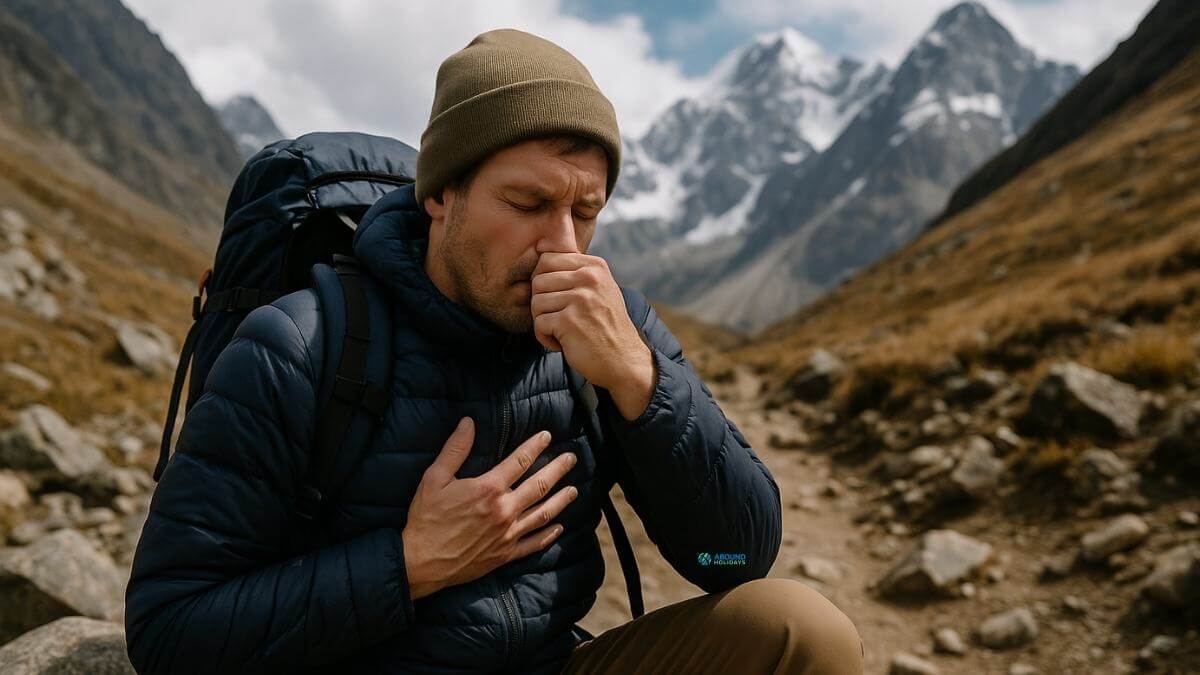
Mild Symptoms (AMS):
- Headache
- Dizziness
- Nausea or loss of appetite
- Fatigue
- Trouble sleeping
Severe Symptoms (HAPE or HACE):
- Difficulty breathing even when resting
- Chest tightness or dry cough
- Confusion or trouble speaking clearly
- Loss of coordination
- Blue lips or fingertips
- Passing out (in extreme cases)
If you or someone in your group shows these severe symptoms, stop trekking and descend right away. Abound Holidays guides are trained to recognize these signs and respond immediately to keep you safe.
When and Where Does It Usually Happen?
Altitude sickness can show up at elevations above 2,500 meters (8,200 ft). In Nepal. Most people start feeling symptoms within 6 to 24 hours after gaining altitude—especially if the ascent is too quick.
Trekkers often feel symptoms at:
Namche Bazaar (3,440m) on the Everest trail
Thorong Phedi (4,540m) on the Annapurna Circuit
Larke Pass (5,160m) on the Manaslu trek
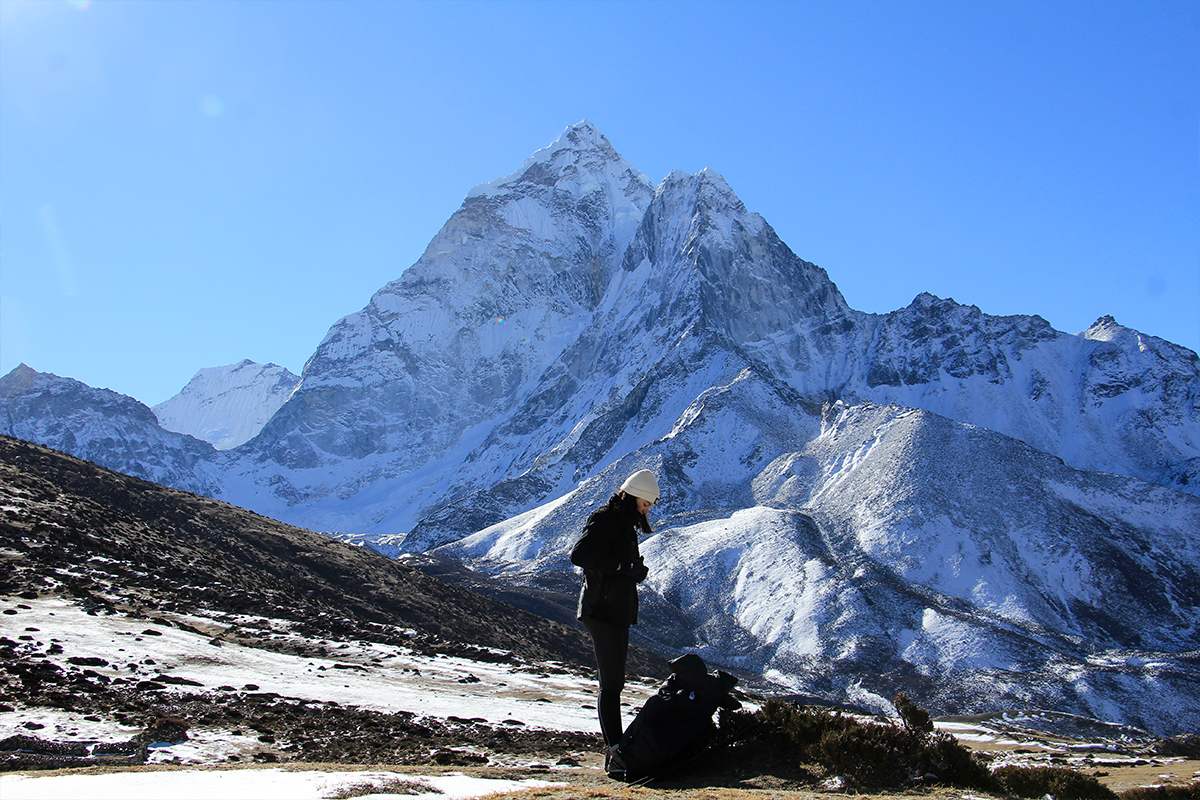
How to Prevent Altitude Sickness?
The best way to deal with altitude sickness is to stop it before it starts. You must follow the smart steps you can take to help your body adjust smoothly as you gain elevation. Prevention is just a matter of listening to your body, pacing yourself, and advance preparation. So that you may concentrate on the views.
Here are some simple and important steps for prevention:
- Climb slowly: You should not go up more than 500 meters per day.
- Take rest days: You must acclimatize wisely.
- Drink plenty of water: You must stay hydrated and avoid alcohol.
- Eat well: Eat food that contains high-carb meals to help your body adjust.
- Sleep low: You must avoid sleeping much higher than your trekking elevation.
- Listen to your body: You should not ignore fatigue or headaches.
At Abound Holidays, we design every trek with safety in mind. From flexible pacing to well-timed rest days and altitude checks, our itineraries give your body time to adjust—without rushing. Your guide will also remind you to stay hydrated and monitor how you’re feeling every day.
Treating Altitude Sickness
When you start feeling the symptoms of altitude sickness, do not panic. In many cases, altitude sickness can be managed effectively if you act quickly and carefully. You must know how to treat it early, as it can prevent things from getting worse and keep your adventure safe and enjoyable.
Immediate Actions
The moment you notice symptoms of altitude sickness, it’s important to take quick but calm steps to help your body recover. These first actions can make a big difference in stopping the illness from getting worse and give you the best chance to feel better soon.
- Rest and stay warm
- Drink fluids
- Don’t climb further until you feel better
- Descend if symptoms get worse
Medications That Can Help
Always talk to your doctor before taking any altitude medication. With Abound Holidays, our guides carry essential first-aid kits and can help you manage symptoms until professional help is available.
- Diamox (Acetazolamide): Speeds up your body’s ability to adjust
- Dexamethasone: Reduces swelling in the brain (for HACE)
- Nifedipine: Used for treating HAPE

What to Do in Emergency Situations?
If someone can’t breathe, is confused, or becomes unresponsive - this is a medical emergency. This is why having proper travel insurance that covers high-altitude rescue is essential. When you trek with Abound Holidays, we help arrange insurance options and are ready to coordinate emergency support if needed.
- Descend immediately, even in the middle of the night
- Call for rescue: In Nepal, a helicopter evacuation may be needed
- Use a Gamow Bag if available (portable pressure chamber)
- Administer oxygen if trained and equipped
Altitude Sickness and Trekking in Nepal
Nepal’s trekking routes are absolutely stunning. But the routes are also challenging due to the elevation.These routes climb high enough for AMS to be a real risk. Mainly for first time trekkers.
These are the Nepal treks that regularly reach high altitudes, including:
Final Tips Before You Go
You must train yourself well before your trek, build stamina, and cardio.
You should not underestimate the altitude, even if you are fit.
You must pack your medications and a small personal first-aid kit.
Drink plenty of water throughout your trek to help your body adjust.
Pack sunglasses, sunscreen, and warm layers to handle sun, cold, and wind.
Be aware of what to look out for so you can act early if needed.
Final Thoughts
Altitude sickness might sound intimidating, but with the right knowledge and preparation. It doesn’t have to ruin your trek. The key is to go slow, listen to your body, and never ignore the early signs.
At Abound Holidays, your safety is always our top priority. We carefully designed itineraries with expert local guides who know how to spot altitude sickness early. We are here to make sure your journey is as safe as it is memorable. Because trekking in Nepal is not just about reaching the top, it’s about enjoying every step along the way.
FAQ’s
Can you get altitude sickness at 5,000 feet?
It’s rare, but some people may feel mild symptoms like headache or fatigue around 5,000 feet—especially if they ascend quickly or aren’t used to higher elevations. However, most cases of altitude sickness occur above 8,000 feet. Still, it's good to listen to your body and stay hydrated even at moderate altitudes.
Can you get altitude sickness at 2,000 feet?
No, it’s highly unlikely to get altitude sickness at 2,000 feet. The oxygen level at that height is still quite normal for most people, even if you’re coming from sea level. Altitude sickness usually doesn’t become a concern until you reach 8,000 feet (2,500 meters) or higher.
How long does altitude sickness last?
Mild altitude sickness usually goes away within 24 to 48 hours if you stop ascending and allow your body to rest. If symptoms persist or get worse, it’s important to descend to a lower altitude. With proper care, most people recover quickly once they’re at a safer elevation.
How quickly can altitude sickness start?
Altitude sickness can start as soon as 6 to 12 hours after reaching a higher elevation. For some people, symptoms might appear sooner, especially if they’ve climbed too fast without giving the body time to adjust. That’s why slow and steady is always the best approach.
Is it okay to keep climbing with mild altitude sickness?
If your symptoms are very mild, you can usually rest for a day at the same altitude before continuing. But if things don’t improve—or get worse—it’s best to descend. Pushing through can turn a mild case into a serious one.
Does drinking water help with altitude sickness?
Yes, staying well-hydrated can help reduce the risk of altitude sickness. Dehydration makes it harder for your body to adjust to lower oxygen levels. So, drink plenty of water, but don’t rely on it alone—acclimatization is still key.
Can fit and healthy people still get altitude sickness?
Absolutely—altitude sickness doesn’t care how strong or athletic you are. Even marathon runners and seasoned hikers can experience it if they ascend too quickly. The best defense is proper acclimatization and listening to your body.
